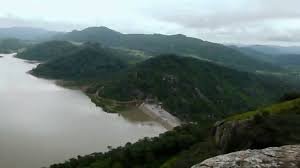By Beverly Bizeki
More than 3,600 families in Chivi District could be forced to relocate as the government prepares to roll out the long-awaited Tugwi Mukosi Master Plan, which outlines major development projects around Zimbabwe’s largest inland dam.
According to the draft master plan released recently and is open to public scrutiny for a three-month period, 3,652 households in the Chivi and Masvingo districts areas are expected to be directly affected, most likely through displacement.
This potential wave of displacements comes in addition to the approximately 3,300 families who were displaced a decade ago and were relocated to Chingwizi in Mwenezi after flooding from the dam inundated the Tugwi Mukosi basin.
“For Chivi District, the concerned wards have a population of 38,644 while for Masvingo Rural District they have a population of 35,422. However, there are about 3,652 households which are more likely to be directly affected by the development in the Tugwi Mukosi development zone. Most of these households will be displaced,” reads part of the draft plan.
Masvingo Provincial Affairs and Devolution Permanent Secretary Dr Addmore Pazvakavambwa however told TellZim News that displacement was the last resort as the government would want to reorganize the affected families in their communities.
“The main thrust of the government is on reorganization or rearrangement for affected families. Displacement would be a last resort. Government has a clear policy on the relocation of people affected by government programmes,” said Dr Pazvakavambwa.
The Tugwi Mukosi Master Plan lays the foundation for infrastructural, agricultural, tourism and urban development around the dam, which was commissioned in 2017. Government has long touted the area as a future economic hub for the southern region.
The memory of the previous displacements in 2014 remain fresh for many in the region. Then, families were hurriedly evacuated as dam waters rose, and many of them still struggle with inadequate infrastructure and limited access to services in their resettlement areas including access to education.
The master plan includes proposals for irrigation schemes, tourism lodges, fishery projects, urban housing development, and road upgrades, all aimed at turning the dam’s catchment into a multi-use economic zone.







